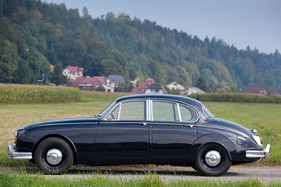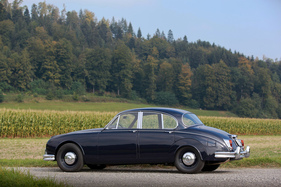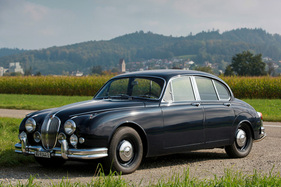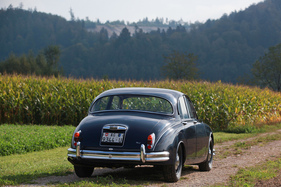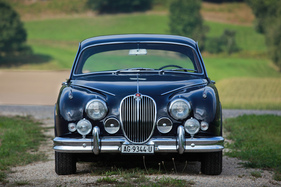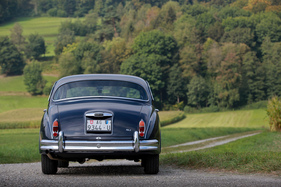Jaguar 2.4 Litre Mk II - gentle, purring cat
Summary
Today, even small cars offer 12 kg per horsepower. But is this power-to-weight ratio also sufficient for a large saloon with a sporty appearance? The Jaguar Mk II with a 2.4-liter engine was always somewhat overshadowed by the 3.4 and 3.8-liter versions. But you don't actually need more than 120 hp to enjoy the elegant saloon, because apart from a little power, it lacks nothing compared to the more expensive versions. This driving report is dedicated to the Mk 2 2.4 Litre and shows it in current and historical pictures, as well as in the sales literature. A sound sample is also included.
This article contains the following chapters
- A leap forward
- Elegant design
- Cultivated high-performance five-seater
- Soon with big brother
- Second edition in 1959
- More is not always more
Estimated reading time: 6min
Preview (beginning of the article)
In the mid-fifties, Jaguar's production car range consisted of the sporty XK 140 and the large Mark VII saloon. When the Coventry-based company presented the Jaguar 2.4 Litre in the run-up to the London Motor Show, there was great interest, as the four-door saloon marked Jaguar's re-entry into the mid-size, sporty car class. At this point, pre-production vehicles had already clocked up half a million test kilometers over a period of 2.5 years, so this was definitely not a rush job. In keeping with the manufacturer's name, the 2.4 Litre was a leap into the modern age. For the first time, the body was self-supporting. While a new type of independent suspension on double wishbones with coil springs and telescopic dampers was used at the front, a rigid axle with trailing arms and leaf springs was used at the rear. The use of many rubber elements was intended to keep road noise away from the interior as far as possible. As a special feature, the rear track was 11.4 cm narrower than the front track. The wheels were shielded from the airflow at the rear by covers (called "spats").
Continue reading this article for free?
Photos of this article














































































































































